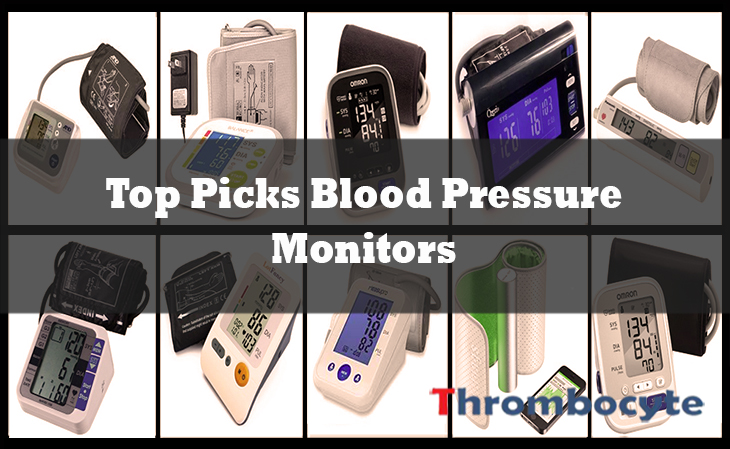The three primary components that constitute the blood are red blood cells, white blood cells, and platelets. The platelets (or thrombocytes) play an integral part in our body system, specifically in blood clotting and the coagulation process.
The platelets, having a very important function in our blood regulatory system, are the smallest of the three. Platelets work to stop bleeding by clumping and forming plugs at the site of injury. Apart from this main function, there are also other innumerable variety of roles associated, controlled, and manipulated by the blood component.
The amount of circulating platelets should be normally around the count of 150,000 to 450,000 per microliter of blood.
Failing to have your platelet levels monitored regularly, especially when experiencing medical conditions relevant to platelet disorders, can put you at risk to a further abnormally higher or lower count. In both cases, the changes should have been highly reflected and observed using diagnostic procedures used to detect abnormal platelet count to allow for a medical conclusion.
Among the most important therapeutic care approaches remains to be the regular monitoring of blood platelet count to help identify any needed changes in your medical treatment plan.
The medical term for the disorder of displaying high platelet count is Thrombocytosis (or thrombocythemia). In some cases of thrombocytosis, the platelet count can increase into as high as 750,000 per microliter of blood. Any amount above 450,000 is considered a high platelet count. The condition needs to be dealt with utmost care and attention in order to promote speedy recovery and prevent further complications that usually can be life-threatening.
There are several possible causative factors behind the elevation of platelet count. In some cases, improper functioning of the bone marrow is involved in the abnormal change. This makes you expect the bone marrow to be included in the diagnostic processes and treatment plan.
The symptoms below may not necessarily only result from an increase in platelet count but have a direct significance relevant to the increase. High platelet count isn’t likely to cause symptoms, making it important to follow a routine blood test.
When the following signs and symptoms are confirmed to be associated with thrombocytosis, the condition should be attended with great care. Read about high platelet count in children.
High Platelet Count Symptoms
Among the most common symptoms of high platelet count are detailed in the list below which you will find categorized accordingly.
Generalized Symptoms:
There are some symptoms that are generally very common among people suffering from high platelet count such as the conditions indicated below:
- Headache
- Weakness
- Temporary vision changes
- Feet and hand numbness
…but the following are specifically some of the most notable elevated platelet count symptoms that require immediate medical attention:
Erythromelalgia:
This is a burning sensation and redness that appears on the patient’s extremities. However, it is a condition that occurs to a very small segment of people with high platelet count. The symptom is usually resolved with cooling and/or use of aspirin.
Abnormal Bleeding:
Bleeding is usually associated with low platelet count or thrombocytopenia, but it can also occur in patients with an elevated platelet count. This happens to individuals with a platelet count higher than 1 million platelets per microliter of blood.
In such cases, formed blood clots due to thrombocytosis will cause an increased necessity to maximize and use up available platelets. It leaves the bloodstream to become insufficient of circulating platelets that seal off present breaks and damages on blood vessel walls.
Signs of bleeding can be observed on the gums and mouth, which is actually a common sign. The bleeding becomes easy while necessary clotting becomes inadequate.
This explains why there are people with high platelet count who experience episodes of nose bleeding as well as easy bruising. Their stool is also often accompanied with blood streaks wherein the color may vary from red to dark red or even black.
- Petro E. Petrides, MD, PhD, & Fabian Siegel (2007). Bleeding Risk in Patients with Essential Thrombocythemia and a Platelet Count of More Than 1.5 Million/μl: A Challenge of the Dogma of Mandatory Initiation of Cytoreductive Therapy.
- Francesca Palandri, Nicola Polverelli, Lucia Catani, Daria Sollazzo, Emanuela Ottaviani, Sarah Parisi, Michele Baccarani, & Nicola Vianelli (2011). Bleeding in essential thrombocythaemia: a retrospective analysis on 565 patients.
Abnormal Blood Clotting:
Blood clots commonly form in areas like the hands, feet, and other vital organs like the brain. It can also develop in other areas of the body, including the heart and intestines. Extreme cases can lead to stroke.
Abnormal blood clotting is one of the most common signs and symptoms of high platelet count. Below are further symptoms that can be linked to abnormal blood clotting:
- Dizziness
- Nausea
- Seizures
The patient may experience difficulty in breathing, accompanied with pain in the arms, legs, neck, and jaw. The pain prolongs with time and may spread towards the abdomen.
Changes in Speech:
A sign of high platelet count that suggests disturbance in speech and awareness. This may range from confusion to passing out.
The patient tends to forget easily. This can be observed by sudden changes in his speeches. Memory can truly be a challenge where sometimes, even short term memory fails. It is a complication brought about by high platelet count due to abnormal blood clotting.
Easy Bleeding:
Easy bleeding can be a life threatening condition which can result from severe high platelet count in the blood. A simple cut can make the patient bleed that seems endless.
Abnormal blood clotting may be the main concern when dealing with a high platelet count, but as mentioned previously, in some other cases abnormal bleeding may also be prominent.
When it comes to a point where easy bleeding becomes evident, it will be very difficult to control the loss of blood for the blood loses its capacity to control and hold the bleeding. Keep in mind that excessive bleeding is a life-threatening condition.
Breathing Difficulty:
Breathing difficulty is a bit of a rare occurrence in most patients suffering from high platelet count. But it can be dangerous if present and when the problem persists for long. Knowing that adequate oxygen supply, needless to mention is of foremost importance, it should be given priority.
When there is difficulty in the capacity to breath, compared to any other symptom of high platelet count, it will take top priority that signals the need for immediate intervention.
Accompanying Disease/s:
There may be medical disorders underlying the patient to explain the onset of high platelet count. An accompanying disease may be anemia where the circulating blood in the body is deficient of RBCs. It may also be cancer which explains the high platelet count.
High platelet count can also be associated to medical conditions like Myelodysplasia, Myelofibrosis, Polycythemia Vera, and Splenectomy. It can also be linked to Kawasaki disease wherein certain blood vessels inflame. This clearly suggests that signs and symptoms will vary among patients with different accompanying medical disorders of thrombocytosis.
Identifying the underlying medical condition that has primarily influenced the disturbance in platelet function can help in understanding and establishing proper treatment methods in dealing with the high platelet count disorder.
Infection:
Signs of infection may arise even with small or insignificant cut in the body which can be a vital situation in patients with high platelet count.
An onset of increased platelet count in the blood makes the body start to lose its power in producing sufficient antibodies to fight against possible infections. It makes the immunity levels of the body against bacterial or viral invasion become reduced.
It’s likely that the resulting infection can become significantly large and give way for growth to any underlying disease as well as makes the body more susceptible to new ones.
Loss of Consciousness:
Loss of consciousness can be a vivid problem associated with high platelet count of the blood. As mentioned earlier, there will manifest confusion in the mind of individuals suffering from high platelet count.
When prolonged and not dealt with accordingly, it can lead to the onset of memory dangers and other psychological problems.
Bleeding in the Mouth and Gums:
Mouth and gum bleeding can also develop in individuals with a high platelet count disorder. A person suffering from Thrombocytosis may find the bleeding unusual considering that it only happens in severe cases of the medical condition.
Bleeding in the mouth can lead to potentially deadly complications when not identified and treated in time, especially in cases of thrombocytosis where infection is a potential risk. High platelet count is not an uncommon disease that should be treated with proper care and attention.
This only list the common signs and symptoms associated with thrombocythemia or high platelet count in the blood. The above mentioned conditions potentially occur either as a direct or indirect result of developing high platelet levels, or probably due to another underlying medical condition. However, these are considerably the prime symptoms noticeable in people with high platelet count disorder.

- READ MORE




